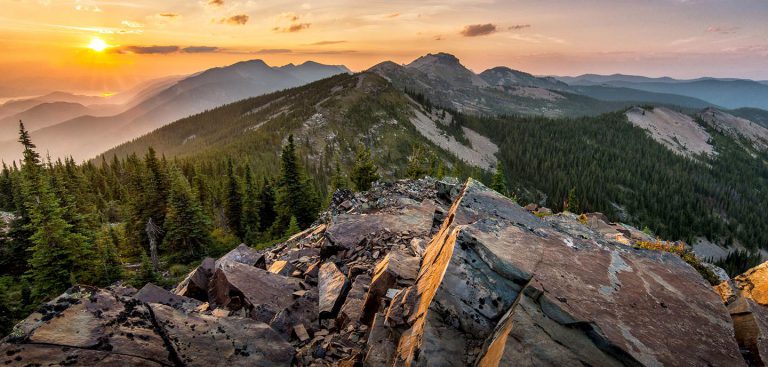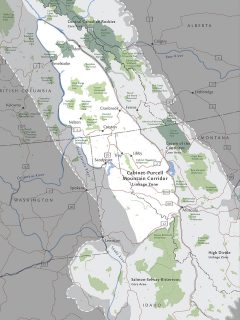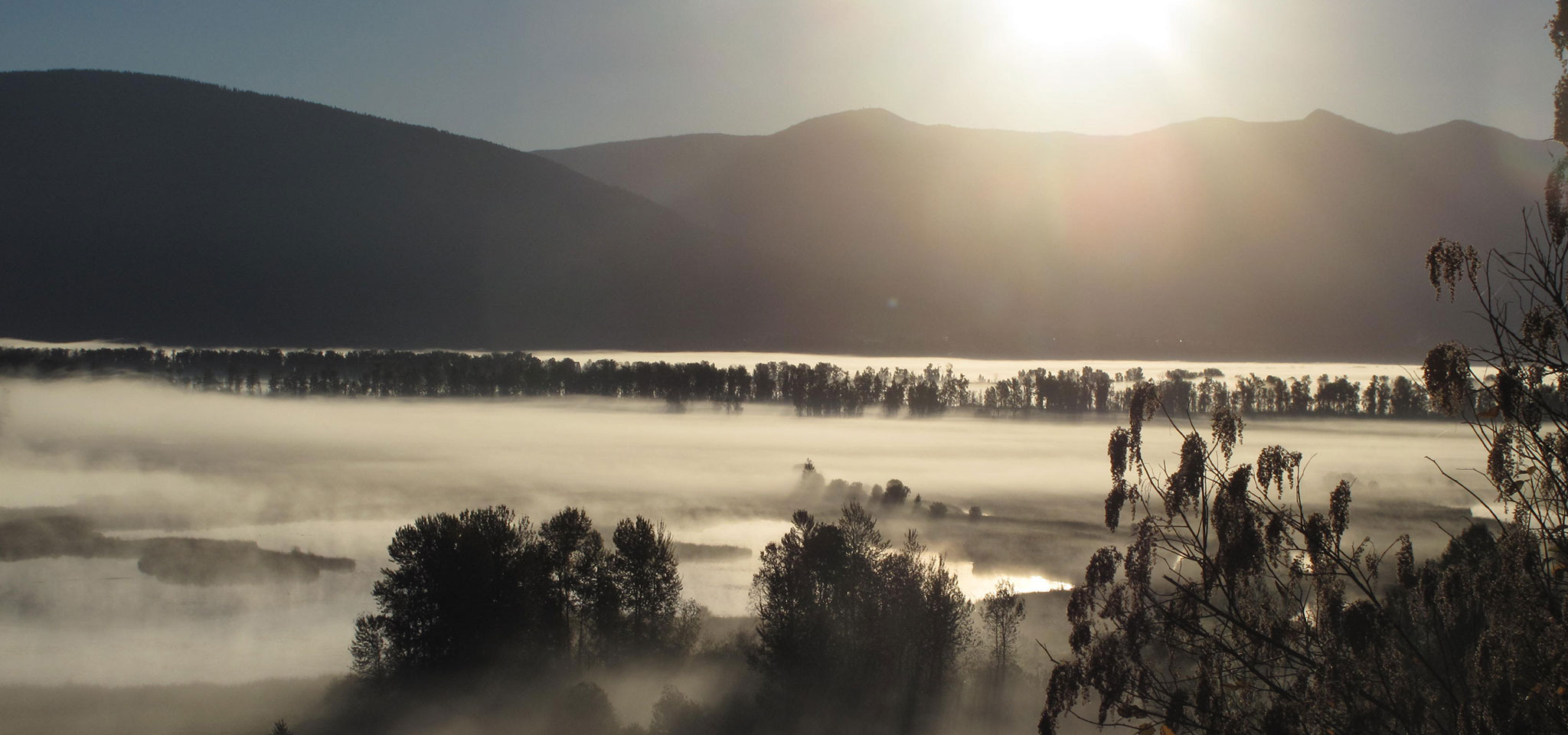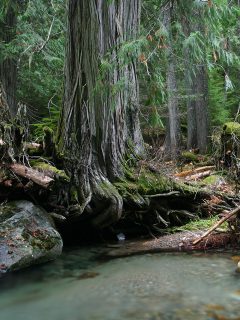
Collaborating for Bears, Community, and the Future
Yellowstone to Yukon

2016 marks the 10th anniversary of the Cabinet-Purcell Mountain Partnership, a conservation collaborative working to ensure the long-term viability of the Cabinet-Purcell region—one of only two grizzly bear travel corridors between Canada and the United States.
What is all the buzz about? “Linking up good habitat for grizzly bears,” says Jodi Hilty, President and Chief Scientist of the Yellowstone to Yukon Conservation Initiative. “Well, I should say that’s why the partners all started talking ten years ago. Today, it’s about much more than that.”
Cabinet-Purcell Mountain Corridor
The trans-border Cabinet-Purcell region stretches from Golden, British Columbia to Missoula, Montana. It encompasses the Purcell, Cabinet, Selkirk and Bitterroot mountain ranges and is a critical linkage zone between larger, protected areas such as the Canadian Mountain Parks to the north, Crown of the Continent Ecosystem to the east, and the Salmon-Selway Ecosystem to the south. In other words, this little-known region, which makes up twenty percent of the greater Yellowstone to Yukon region, has a big job to do to keep the larger ecoregion knitted together.
Creating a Plan
“In the late 1990s wildlife biologists recognized that if grizzly bears were going to thrive in this region, people would have to focus on protecting core habitat, ensuring connectivity, and providing residents with the tools and resources to coexist successfully with them and other wildlife,” says Hilty. More than sixty partners including community-based groups, state and provincial organizations, agencies, funders, and researchers have played roles in creating, informing, and implementing a plan to get the job done.
Making Strides
“Ten years out, we can point to progress in three areas—core habitat protection, increased connectivity, and more coexistence tools in the hands of those who need them,” says Kim Trotter, Yellowstone to Yukon Conservation Initiative’s U.S. Director. In response to a suite of actions, the grizzly bear population has increased from an estimated 25 to 30 bears in the U.S. Cabinet-Yaak population in the 1990s to roughly fifty today. Changes likely contributing to this population growth include protecting wildlife corridors, the Forest Service decommissioning or closing more than 600 miles of old logging roads, and securing nearly 200 bear attractants such as chicken coops and community landfills. These steps make it safer for bears and humans to live in this landscape together.

British Columbia's Creston Valley provides a conservation link between the Selkirk and Purcell Mountains. Photo: Michael Proctor
“Conservation plans are stronger when they are built with many hands, from the ground up, and informed with good science.”
Building Community Connections
“The Cabinet-Purcell Mountain Partnership demonstrates that conservation plans are stronger when they are built with many hands, from the ground up, and informed with good science,” shares Phil Hough, Executive Director of the Friends of Scotchman Peaks Wilderness. Hough and his colleagues in the Yaak Valley acknowledge they participate in and value the Partnership because their ideas are being implemented as part of a larger framework. “Our work in the Yaak is more relevant because we have partners who are working in adjacent communities,” says Robyn King, Executive Director of the Yaak Valley Forest Council. “At the end of the day, we need somebody to be thinking about every part of this region—our job here is to think about the Yaak Valley and to build partnerships with neighboring communities. Others need to build from there.”
Wilburforce Foundation recognizes that protecting connectivity takes many different skills, knowledge, and relationships. Collaborations such as the Cabinet-Purcell Mountain Partnership support knowledge-sharing and collaborative planning among many players. When this happens organizations, agencies, and communities are more effective in accomplishing their goals and working through tough decisions together.

Charting the Future
Going forward, the Cabinet-Purcell Mountain Partnership will build on its successes to increase community support for wildlife and achieve on-the-ground conservation outcomes that will provide secure habitat for bears and other wildlife. “Recent data will allow us to make informed recommendations about mitigating highway collisions between cars and wildlife,” says Trotter, “and all partners are looking to continue to learn from each other to strengthen local work and the larger, regional effort.”



